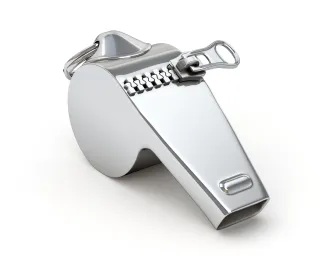The Department of Labor Administrative Review Board’s ruling in Palmer v. Canadian National Railway, ARB No. 16-035, ALJ No. 2014-FRS-154 (ARB Sept. 30, 2016) (en banc), underscores that the burden-shifting framework under most of the whistleblower-protection laws enforced by the Department of Labor is very favorable to whistleblowers. Though the ARB held that ALJs can consider an employer’s reason for taking an adverse action in determining whether the whistleblower has proven “contributing factor” causation, such evidence will rarely be dispositive where there is any evidence that the complainant’s protected conduct played any role in the adverse action. Since the whistleblower need show only that the protected activity played a role in the adverse action, “the employee necessarily prevails at step one if there was more than one reason and one of those reasons was the protected activity.” Palmer, ARB No. 16-035 at 53.
Palmer also clarifies several critical aspects of the burden-shifting framework under most of the DOL whistleblower-protection laws:
- “Contributing factor” causation is a broad and forgiving standard for whistleblowers, requiring the complainant to show that protected activity played some role—even an insignificant or insubstantial role—in the adverse action.
- Decision-maker knowledge of the protected activity and close temporal proximity will suffice to prove causation in some cases.
- A whistleblower need not disprove the employer’s reasons for taking an adverse action (i.e., prove pretext) to demonstrate causation.
- “Since the ‘contributing factor’ standard requires only that the protected activity play some role in the adverse action, the employer’s nonretaliatory reasons are not ‘weighed against’ the employee’s protected activity to determine which reasons might be weightier. In other words, the ALJ should not engage in any comparison of the relative importance of the protected activity and the employer’s nonretaliatory reasons.” at 55.
- Once the whistleblower demonstrates contributing factor causation (a minimal burden), the employer has an onerous burden to prove by clear and convincing evidence that it would have taken the adverse action absent the employee’s engaging in protected conduct. “It is not enough for the employer to show that it could have taken the same action; it must show that it would have. . . . Quantified, the probabilities might be in the order of above 70%.” at 57.
Two-Step Framework for DOL Whistleblower Claims
In cases brought under DOL-administered whistleblower provisions incorporating the AIR-21 burden-of-proof provision, there is a two-step framework: “first, the factfinder must determine whether the employee has proven, by a preponderance of the evidence, that the protected activity was a contributing factor in the adverse action (the “contributing factor” step).” Id. at 35. In other words, the ALJ assesses whether it is “more likely than not that the employee’s protected activity played a role, any role whatsoever, in the adverse personnel action.” Id. at 35. If the employee prevails at step one (proves causation), “the factfinder must determine whether the employer has proven, by clear and convincing evidence, that, even if the employee had not engaged in protected activity, the employer nonetheless would have taken the same adverse action.” Id. at 35.
Contributing Factor Causation Is a “Broad and Forgiving” Standard
During the first step or phase of the analysis, the ALJ can consider any relevant, admissible evidence to determine whether the complainant has proven that protected conduct contributed to the adverse action. The ARB expressly held that the burden of proving causation is very favorable to whistleblowers:
We have said it many a time before, but we cannot say it enough: “A contributing factor is ‘any factor, which alone or in combination with other factors, tends to affect in any way the outcome of the decision.’” We want to reemphasize how low the standard is for the employee to meet, how “broad and forgiving” it is. “Any” factor really means any factor. It need not be “significant, motivating, substantial or predominant”—it just needs to be a factor. The protected activity need only play some role, and even an “[in]significant” or “[in]substantial” role suffices. Id. at 53 (citations omitted).
Recognizing that “employees are likely to be at a severe disadvantage in access to relevant evidence,” the ARB noted that causation can be proven using circumstantial evidence. Such evidence can include “motive, bias, work pressures, past and current relationships of the involved parties, animus, temporal proximity, pretext, shifting explanations, and material changes in employer practices, among other types of evidence.” Bobreski v. J. Givoo Consultants, Inc., ARB No. 13-001, ALJ No. 2008-ERA-3 (ARB Aug. 29, 2014).
Knowledge and Timing May Suffice to Prove Causation
Though the ARB rejected a per se knowledge/timing rule, the ARB held that “an ALJ could believe, based on evidence that the relevant decisionmaker knew of the protected activity and that the timing was sufficiently proximate to the adverse action, that the protected activity was a contributing factor in the adverse personnel action.” Palmer, ARB No. 16-035 at 56. But before concluding that a complainant has proven causation, the ALJ must consider all relevant evidence.
In Mixed Motive Cases, Whistleblowers Will Always Prevail During the First Step
While Palmer permits ALJs to consider the alleged non-retaliatory reasons for an adverse action at the causation stage, such evidence is essentially irrelevant because the whistleblower will prevail at the causation stage if the whistleblower’s protected activity played any role in the adverse action. The ARB held:
Importantly, if the ALJ believes that the protected activity and the employer’s nonretaliatory reasons both played a role, the analysis is over and the employee prevails on the contributing-factor question. Thus, consideration of the employer’s nonretaliatory reasons at step one will effectively be premised on the employer pressing the factual theory that nonretaliatory reasons were the only reasons for its adverse action. Since the employee need only show that the retaliation played some role, the employee necessarily prevails at step one if there was more than one reason and one of those reasons was the protected activity.
Id. at 53 (citations omitted) (emphasis added).
This aspect of Palmer is critical because it requires ALJs to assess the employer’s non-retaliatory reasons for an adverse action under the “clear and convincing” evidence standard, not under a preponderance-of-the-evidence standard. And while the Palmer majority appears eager to reject Fordham v. Fannie Mae, Palmer demonstrates whyFordham is correct. If the causation analysis is over once the complainant proves that protected activity played anyrole in the adverse action, then the evidence supporting the employer’s non-retaliatory reasons for the adverse action is irrelevant once complainant has made this minimal showing. Palmer fails to explain why ALJs should expend limited resources considering irrelevant evidence rather than proceeding to the second phase of the analysis (the same-action affirmative defense).
Whistleblowers Need Not Demonstrate Pretext
By requiring ALJs to consider the employer’s alleged non-retaliatory reasons for an adverse action at the causation stage, the ARB could unintentionally encourage ALJs to engage in a pretext analysis. Fortunately, the ARB reaffirmed its prior decisions holding that a whistleblower need not disprove the employer’s reasons for taking an adverse action:
This is why we have often said that the employee does not need to disprove the employer’s stated reasons or show that those reasons were pretext. Showing that an employer’s reasons are pretext can of course be enough for the employee to show protected activity was a “contributing factor” in the adverse personnel action. Indeed, at times, the factfinder’s belief that an employer’s claimed reasons are false can be precisely what makes the factfinder believe that protected activity was the real reason.
Palmer, ARB No. 16-035 at 53-54 (citations omitted) (emphasis added). It will be critical for whistleblower advocates to prevent ALJs from using Palmer to require complainants to prove pretext.
At the Causation Stage, ALJs Should Not Weigh the Employer’s Non-Retaliatory Reasons Against the Employee’s Protected Activity
Palmer cautions ALJs not to weigh the relative importance of the protected activity and the employer’s non-retaliatory reasons in determining “contributing factor” causation:
That is also why the term “weigh” when describing the ALJ’s task may well have added to the confusion. Since the “contributing factor” standard requires only that the protected activity play some role in the adverse action, the employer’s nonretaliatory reasons are not “weighed against” the employee’s protected activity to determine which reasons might be weightier. In other words, the ALJ should not engage in any comparison of the relative importance of the protected activity and the employer’s nonretaliatory reasons. As long as the employee’s protected activity played some role, that is enough. But the evidence of the employer’s nonretaliatory reasons must be considered alongside the employee’s evidence in making that determination; for if the employer claims that its nonretaliatory reasons were the only reasons for the adverse action (as is usually the case), the ALJ must usually decide whether that is correct. But, the ALJ never needs to compare the employer’s nonretaliatory reasons with the employee’s protected activity to determine which is more important in the adverse action.
Id. at 55 (citations omitted) (emphasis added). Palmer’s admonition against engaging in a comparative weighing of the respective parties’ causation evidence is similar to the holding in Fordham that such “weighing is exactly what the ‘contributing factor’ statutory provision was designed to eliminate. . . . An employer’s legitimate business reasons may neither factually nor legally negate an employee’s proof that protected activity contributed to an adverse action.” Fordham, ARB No. 12-061 at 23. The main difference between Fordham and Palmer is that Palmermuddies the waters by requiring ALJs to consider essentially irrelevant evidence at the causation stage.
Under Palmer, ALJs should not engage in comparative weighing and the causation analysis ends once the complainant shows that protected conduct played any role in the adverse action. Yet Palmer requires ALJs to consider the employer’s evidence of a non-retaliatory reason for the adverse action once the complainant has already demonstrated causation, “but only to determine whether the protected activity played any role at all.” Palmer, ARB No. 16-035 at 15. Such a requirement appears to invite the comparative weighing that Palmerpurports to prohibit.
The Same-Action Affirmative Defense in Whistleblower Cases is Onerous
Once the complainant has met the generous “contributing factor” causation standard, the employer faces an onerous burden to prove an affirmative defense:
It is not enough for the employer to show that it could have taken the same action; it must show that it would have. The standard of proof that the ALJ must use, “clear and convincing,” is usually thought of as the intermediate standard between “a preponderance” and “beyond a reasonable doubt”; it requires that the ALJ believe that it is “highly probable” that the employer would have taken the same adverse action in the absence of the protected activity. “Quantified, the probabilities might be in the order of above 70% . . . .” Again, as when making a determination at step one, the ALJ must consider all relevant, admissible evidence when determining whether the employer has proven that it would have otherwise taken the same adverse action; and again, it is crucial that the ALJ find facts and clearly articulate those facts and the specific evidence in the record that persuaded the ALJ of those facts.
Id. at 57 (citations omitted) (emphasis added).
Whistleblower Advocates Must Remain Vigilant to Ensure that Palmer Will Not Erode the Strong Protection that Congress Afforded to Whistleblowers
If Palmer is applied correctly, (1) the employer’s evidence supporting an adverse action will rarely be dispositive at the causation stage where there is any evidence that protected conduct contributed to an adverse action; and (2) ALJs will not engage “in any comparison of the relative importance of the protected activity and the employer’s nonretaliatory reason.” But by requiring ALJs to consider the non-retaliatory reason for an adverse action at the causation stage, the ARB risks forcing complainants to prove pretext. Whistleblower advocates must remain vigilant to ensure that Palmer will not weaken the favorable burden-shifting framework that Congress has afforded whistleblowers.



 />i
/>i

